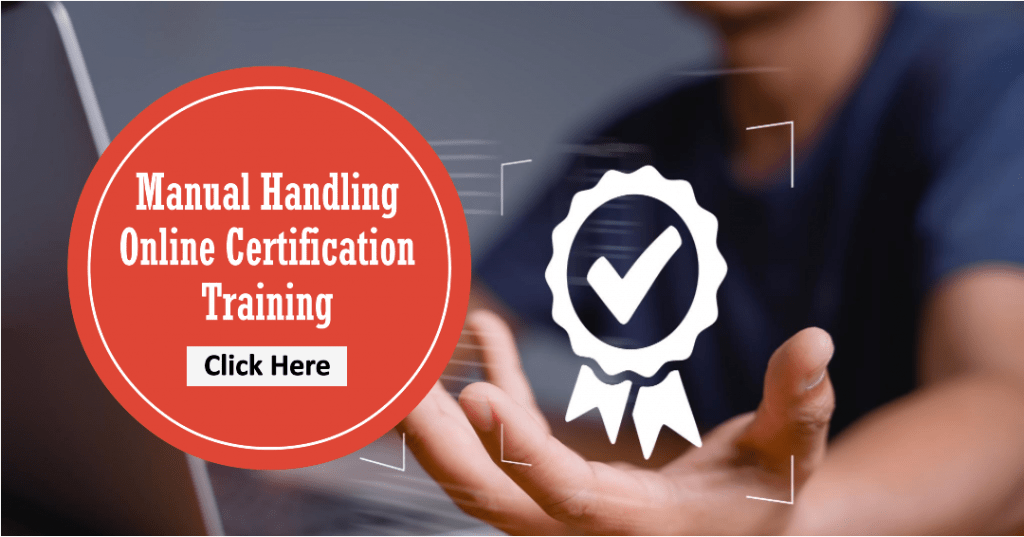One area of workplace safety that requires particular attention is manual handling. Manual handling refers to any activity that involves lifting, carrying, pushing, pulling, or moving objects by hand or bodily force. While it may seem like a routine aspect of many jobs, manual handling carries inherent risks that can result in musculoskeletal injuries, strains, and sprains.
The implementation of comprehensive safety measures in workplaces contributes to reducing accidents, injuries, and illnesses. By minimizing these risks, organizations can prevent disruptions to operations, avoid legal complications, and maintain a positive reputation. Moreover, prioritizing safety cultivates a culture of care and responsibility among employees, fostering a sense of trust and loyalty towards the company.
By understanding the importance of workplace safety and the specific risks associated with manual handling, organizations can implement effective preventive measures, training programs, and ergonomic solutions. This proactive approach not only safeguards the well-being of employees but also enhances overall productivity and contributes to a culture of safety.
I.Understanding Advanced Manual Handling
A.Definition and scope of advanced manual handling
When it comes to workplace safety, advanced manual handling represents a specialized area that requires additional knowledge, skills, and precautions. It encompasses tasks that involve more complex or demanding manual handling techniques, often requiring specialized training and equipment. Advanced manual handling typically applies to industries such as healthcare, construction, manufacturing, and logistics, where workers regularly encounter unique challenges and risks.
The scope of advanced manual handling extends beyond simple lifting and carrying tasks. It includes activities such as team lifting, transferring patients with mobility limitations, maneuvering heavy or awkward objects, operating machinery, and working in confined spaces. These tasks demand a higher level of physical exertion, coordination, and attention to detail to ensure the safety of both the handler and the load being moved.
In advanced manual handling scenarios, it is essential to consider factors such as load weight, size, shape, stability, and the environment in which the task is performed. Complex lifting techniques, the use of specialized equipment like hoists or slings, and adherence to strict protocols become crucial to mitigate risks and prevent injuries.
B.Common injuries associated with improper manual handling techniques
Improper manual handling techniques can lead to a wide range of injuries, some of which are particularly prevalent in advanced manual handling scenarios. These injuries not only cause immediate pain and discomfort but can also have long-term implications for an individual’s physical well-being and work capacity.
- Musculoskeletal injuries: The most common type of injury resulting from improper manual handling is musculoskeletal in nature. These injuries affect the muscles, tendons, ligaments, and other supporting structures of the body. Back strains, herniated discs, sprained joints, and muscle tears are among the frequent musculoskeletal injuries caused by lifting or moving heavy loads without proper technique or assistance.
- Strains and sprains: Inadequate lifting or awkward movements can strain muscles and ligaments, leading to strains and sprains. These injuries commonly affect the back, shoulders, neck, and wrists. Strains occur when muscles or tendons are stretched or torn, while sprains involve the stretching or tearing of ligaments that connect bones to each other.
- Falls and trips: Improper manual handling can also increase the risk of falls and trips. Carrying objects that obstruct the field of vision, lifting loads that impede balance, or navigating through cluttered work areas can result in slips, trips, or falls. These accidents can cause fractures, head injuries, and sprained or twisted joints.
- Overexertion: Engaging in advanced manual handling tasks that exceed an individual’s physical capabilities can lead to overexertion. This can result in fatigue, exhaustion, and a higher susceptibility to other injuries. Overexertion can also contribute to cumulative trauma disorders, where repeated stress on specific body parts leads to chronic conditions like tendonitis or bursitis.
Recognizing the potential for these injuries is crucial in order to implement proper training, ergonomic solutions, and risk assessments. Advanced manual handling demands a higher level of attention, preparation, and caution to ensure the safety and well-being of workers while carrying out challenging tasks.
Learn more about the Risk associated with Manual Handling here.
II.Benefits of Advanced Manual Handling Training Programs
A.Improved employee health and well-being
Implementing advanced manual handling training programs brings numerous benefits to employee health and well-being. By providing workers with the necessary knowledge and skills, these programs empower them to perform manual handling tasks safely and effectively. As a result, employees are less likely to experience musculoskeletal injuries, strains, and sprains that can cause pain, discomfort, and long-term health issues.
Advanced manual handling training programs focus on teaching proper lifting techniques, body mechanics, and ergonomics. They educate employees about load assessment, risk identification, and the use of specialized equipment to minimize the strain on their bodies. By instilling this knowledge, organizations can reduce the physical toll on workers and promote their overall health and well-being.
Moreover, when employees feel confident in their ability to handle manual tasks correctly, they experience a boost in self-esteem and job satisfaction. They become more engaged in their work, knowing that their employer values their safety and invests in their development. This positive psychological impact contributes to a healthier and more motivated workforce.
If you are looking forward to get trained in Manual Handling, then no look further. You can get enrolled to the Training here.
B.Reduction in workplace accidents and injuries
One of the primary benefits of advanced manual handling training programs is a significant reduction in workplace accidents and injuries. By equipping employees with the skills to handle complex manual tasks safely, organizations can prevent accidents that lead to downtime, medical costs, and potential legal liabilities.
Workers who undergo advanced manual handling training are more aware of potential hazards and risks associated with their tasks. They learn to assess their environment, identify potential dangers, and take proactive measures to mitigate them. This proactive approach helps create a safer work environment for everyone involved.
Moreover, trained employees are more likely to communicate and collaborate effectively when it comes to manual handling. They can work together to identify the safest and most efficient methods for lifting, carrying, and moving heavy or awkward loads. This collaborative effort reduces the likelihood of accidents caused by inadequate communication or coordination.
C.Increased productivity and efficiency
Implementing advanced manual handling training programs can have a direct positive impact on productivity and efficiency in the workplace. When employees possess the necessary skills and techniques to handle manual tasks properly, they can carry out their duties more efficiently and with fewer interruptions.
Proper lifting techniques and ergonomic practices reduce the strain on the body, allowing employees to work at a comfortable pace without excessive fatigue or discomfort. This leads to improved productivity as they can maintain their energy levels and focus on their core responsibilities.
Furthermore, by minimizing the risk of injuries, organizations can avoid absenteeism and the subsequent disruptions in workflow. Trained employees are less likely to take time off due to work-related injuries, resulting in increased overall productivity and continuity in operations.
Additionally, advanced manual handling training programs promote a culture of safety and accountability. Employees become more vigilant about their own well-being and that of their colleagues. This shared responsibility for safety encourages a positive work environment where everyone is invested in working efficiently and looking out for one another.
In conclusion, advanced manual handling training programs bring a multitude of benefits to organizations and employees alike. By improving employee health and well-being, reducing workplace accidents, and increasing productivity and efficiency, these programs contribute to a safer, healthier, and more successful work environment.
III.Key Components of Effective Training Programs
A.Risk assessment and identification
Effective advanced manual handling training programs prioritize the understanding and assessment of risks associated with manual handling tasks. Training participants learn to identify potential hazards, both obvious and subtle, that may increase the likelihood of injuries. This includes recognizing factors such as load weight, size, shape, stability, environmental conditions, and any physical limitations of the handler.
Training on risk assessment equips employees with the ability to evaluate the level of risk involved in a particular task and determine appropriate preventive measures. They learn to anticipate potential challenges and develop strategies to minimize or eliminate risks altogether. By emphasizing risk assessment and identification, training programs empower workers to make informed decisions and take proactive steps towards maintaining a safe working environment.
B.Proper lifting techniques and body mechanics
An essential component of advanced manual handling training programs is the instruction of proper lifting techniques and body mechanics. Participants are taught how to position their bodies, distribute weight, and use leverage effectively to minimize strain and reduce the risk of injuries.

Training covers techniques such as bending at the knees, keeping the back straight, and using leg muscles rather than relying solely on the back when lifting heavy objects. Participants learn to maintain a stable base, use a firm grip, and avoid sudden or jerky movements that can cause strains or sprains.
By practicing and mastering these proper lifting techniques, employees can safely handle heavy or awkward loads without putting excessive strain on their bodies. These skills promote efficiency, reduce the risk of injuries, and contribute to long-term musculoskeletal health.
Read more about the Proven Strategies and Effective Techniques of Manual Handling here.
C.Equipment and tools for safe manual handling
Effective training programs recognize the importance of introducing employees to appropriate equipment and tools designed to facilitate safe manual handling. Participants learn about the different types of equipment available, such as hoists, trolleys, slings, and lifting aids, and how to utilize them correctly.
Training covers topics such as equipment selection, inspection, maintenance, and safe operation. Participants gain a comprehensive understanding of when and how to use specific equipment for different manual handling scenarios. This knowledge ensures that employees have access to the right tools to reduce physical strain and minimize the risk of injuries associated with manual handling tasks.
D.Ergonomics and workplace design considerations
A crucial aspect of effective advanced manual handling training programs is the integration of ergonomics principles and workplace design considerations. Participants are educated about the importance of ergonomics in preventing musculoskeletal disorders and optimizing performance.
Training focuses on topics such as proper workstation setup, the arrangement of tools and equipment within the workspace, and the design of work processes to minimize the need for manual handling. Employees learn to recognize and address ergonomic risk factors, such as poor posture, repetitive motions, and prolonged static positions.
By incorporating ergonomic principles into training, organizations promote the creation of work environments that support safe manual handling. This includes adjustments to workstation heights, the use of ergonomic tools and equipment, and the implementation of ergonomic work practices. The goal is to optimize worker comfort, minimize physical strain, and reduce the risk of injuries associated with manual handling tasks.
IV.Implementing Advanced Manual Handling Training Programs
A.Training methodologies and formats
Implementing advanced manual handling training programs requires careful consideration of appropriate training methodologies and formats. Organizations can choose from various approaches based on their specific needs and resources.
- Interactive workshops: Conducting interactive workshops allows participants to engage in hands-on activities and simulations that mimic real-life manual handling tasks. This format encourages active learning, problem-solving, and the application of proper techniques. Trainers can provide immediate feedback, address individual concerns, and facilitate group discussions to enhance understanding and retention of knowledge.
- Online training modules: Online training modules offer flexibility and accessibility, allowing employees to complete the training at their own pace and convenience. These modules can include instructional videos, interactive quizzes, and case studies to facilitate learning. Online platforms may also track progress and provide certification upon completion, ensuring accountability and documentation of training.
- Demonstrations and practical sessions: Incorporating practical demonstrations and sessions into the training enables participants to observe proper techniques firsthand. Trainers can demonstrate lifting, transferring, and maneuvering techniques while explaining key principles and best practices. Practical sessions provide opportunities for participants to practice and receive personalized guidance, reinforcing their learning.
B.Tailoring programs to specific industries or job roles
To maximize the effectiveness of advanced manual handling training programs, it is essential to tailor the content to specific industries or job roles. Different industries and job roles present unique challenges and risks, requiring customized training to address industry-specific manual handling tasks.
For example, healthcare workers may require training in patient handling techniques, including transfers, lifts, and repositioning. Construction workers may benefit from training that focuses on safely moving heavy building materials or operating machinery. Warehouse employees may require training on proper lifting and stacking techniques for different types of products. By identifying the specific manual handling tasks relevant to each industry or job role, organizations can design training programs that address the specific needs and risks of their employees.
C.Integration with existing safety protocols and procedures
Integrating advanced manual handling training programs with existing safety protocols and procedures is crucial for a comprehensive and cohesive approach to workplace safety. Training should align with and reinforce existing safety guidelines and procedures established by the organization.
This integration ensures that employees understand how manual handling fits within the broader safety framework of the organization. It also emphasizes the importance of consistently applying safe manual handling practices as part of daily operations.
By linking advanced manual handling training with existing safety protocols, organizations can foster a culture of safety where employees recognize the interconnections between various safety practices. This integration also helps streamline communication and coordination between different safety initiatives, creating a unified approach to workplace safety.
V.Evaluating the Effectiveness of Training Programs
A.Measurement and assessment metrics
Evaluating the effectiveness of advanced manual handling training programs requires the use of appropriate measurement and assessment metrics. Organizations can employ various methods to assess the impact and outcomes of the training, ensuring that the desired objectives are met.
Some key evaluation metrics include:
- Knowledge assessment: Conducting pre- and post-training assessments to measure the participants’ knowledge and understanding of advanced manual handling concepts. This allows organizations to gauge the level of improvement achieved through the training program.
- Skills assessment: Utilizing practical assessments or simulations to evaluate participants’ ability to apply proper manual handling techniques in real or simulated workplace scenarios. These assessments provide insights into the practical application of knowledge gained during the training.
- Injury and accident data: Analyzing injury and accident data before and after the implementation of the training program to assess changes in incident rates. A decrease in the number and severity of manual handling-related injuries indicates the effectiveness of the training in reducing workplace incidents.
- Employee feedback: Collecting feedback from participants regarding their perception of the training program, its relevance, and its impact on their daily work. Employee feedback can highlight areas of improvement and provide insights into the program’s strengths and weaknesses.
- Compliance and adherence to safe practices: Observing and evaluating employees’ adherence to safe manual handling practices post-training. This can be done through workplace observations, checklists, or audits to ensure that employees are applying the knowledge and skills acquired during the training.
B.Feedback and continuous improvement
Feedback and continuous improvement are essential components of evaluating and enhancing the effectiveness of advanced manual handling training programs. Organizations should establish mechanisms to gather feedback from participants, trainers, and relevant stakeholders to identify areas for improvement and implement necessary changes.
- Participant surveys: Conducting post-training surveys or interviews to gather feedback from participants regarding their learning experience, the effectiveness of the training materials, and suggestions for improvement. This feedback helps identify strengths and weaknesses in the training program and informs future enhancements.
- Trainer and expert input: Seeking input from trainers and subject matter experts who deliver the training to gain insights into their experiences and perspectives. Their observations, suggestions, and expertise can contribute to refining the training content, delivery methods, and overall effectiveness.
- Data analysis: Analyzing evaluation metrics, such as knowledge assessment results, injury data, and employee feedback, to identify patterns, trends, and areas of improvement. This data-driven approach provides objective insights into the impact of the training program and helps identify specific areas that require further attention or modification.
- Ongoing monitoring and adjustment: Establishing a process for ongoing monitoring of the training program’s effectiveness and making adjustments based on feedback and data analysis. This allows organizations to continuously improve the program, update content as needed, and address emerging needs and challenges in the workplace.
By actively seeking feedback and embracing a culture of continuous improvement, organizations can refine their advanced manual handling training programs to ensure they remain effective and aligned with the evolving needs of their workforce and industry.
VI.Future Trends and Innovations
A.Technology-driven advancements in manual handling training
The future of advanced manual handling training is expected to witness significant advancements driven by technology. Innovations in this domain aim to enhance the effectiveness, accessibility, and engagement of training programs.
Here are some potential trends and advancements to look out for:
- Virtual Reality (VR) and Augmented Reality (AR): VR and AR technologies offer immersive and interactive training experiences. These technologies can simulate real-world manual handling scenarios, allowing trainees to practice techniques and navigate challenging environments in a safe virtual setting. VR and AR can provide immediate feedback, track progress, and enhance learning retention.
- Wearable Devices: Wearable devices, such as smart sensors and haptic feedback systems, can provide real-time data on body positioning, weight distribution, and muscle exertion during manual handling tasks. These devices offer personalized guidance and alerts to prevent improper techniques and reduce the risk of injuries. They can also collect data for analysis and continuous improvement of training programs.
- Gamification: Gamification techniques can be employed to make training programs more engaging and interactive. By incorporating game elements like challenges, rewards, and leaderboards, manual handling training can become more enjoyable and motivating for employees. Gamification encourages active participation, healthy competition, and continuous learning.
- Mobile and Microlearning: The widespread use of mobile devices allows for on-the-go access to training materials and resources. Mobile apps and microlearning modules provide bite-sized, easily digestible training content that can be accessed anytime, anywhere. This approach enables employees to learn at their own pace, reinforcing key concepts and techniques as needed.
B.Emerging practices and approaches
In addition to technology-driven advancements, emerging practices and approaches are shaping the future of advanced manual handling training:
- Ergonomics Integration: Future training programs are likely to place even greater emphasis on ergonomics. Integrating ergonomics principles into manual handling training will ensure that employees are equipped with the knowledge to optimize their work environment, minimize physical strain, and prevent musculoskeletal disorders.
- Personalization and Adaptability: Training programs may increasingly incorporate personalized learning paths based on individual needs, abilities, and job roles. Adaptive training algorithms can dynamically adjust the content, pace, and level of difficulty to cater to each trainee’s specific requirements, optimizing learning outcomes.
- Data Analytics and Predictive Insights: With the increasing availability of data, organizations can leverage analytics to identify patterns, trends, and potential risks in manual handling tasks. Advanced data analysis techniques can generate predictive insights, enabling organizations to proactively address potential hazards and implement targeted training interventions.
- Cross-functional Collaboration: Future training programs may emphasize cross-functional collaboration to address manual handling challenges that span multiple departments or job roles. This collaborative approach fosters a shared understanding of manual handling risks and encourages employees to work together to develop innovative solutions.
- Emphasis on Mental Well-being: Recognizing the connection between physical and mental well-being, future training programs may incorporate techniques to promote mindfulness, stress management, and resilience. These practices can help employees develop a holistic approach to manual handling, considering both physical and mental aspects for a healthier and safer work environment.
By embracing technology-driven advancements, adopting emerging practices, and continuously innovating, organizations can stay at the forefront of advanced manual handling training. These trends and approaches have the potential to revolutionize the way employees are trained, ensuring safer and more efficient manual handling practices in the future.
Conclusion
In conclusion, advanced manual handling training is a vital component of workplace safety. By investing in training programs, organizations can ensure the health, safety, and productivity of their employees while cultivating a positive safety culture. Let us prioritize workplace safety, empower our employees, and strive for continuous improvement to create a safer and more successful working environment.

Frequently Asked Questions (FAQs)
What is advanced training for manual handling safety?
Advanced training for manual handling safety goes beyond basic techniques, providing specialized knowledge and skills to handle complex manual tasks safely and efficiently.
How does advanced training empower teams in manual handling safety?
Advanced training empowers teams by equipping them with the expertise to assess risks, utilize proper lifting techniques, and implement safe practices, fostering a culture of safety and preventing workplace injuries.
What are the benefits of advanced training for manual handling safety?
Advanced training offers numerous benefits, including reduced workplace accidents, improved employee well-being, increased productivity, and a positive safety culture that enhances overall team performance.
Who should undergo advanced training for manual handling safety?
Advanced training is beneficial for all employees involved in manual handling tasks, especially those in industries such as healthcare, construction, manufacturing, and logistics, where complex and demanding manual tasks are common.
How can organizations implement advanced training for manual handling safety?
Organizations can implement advanced training programs by partnering with experts or training providers who specialize in manual handling safety, tailoring the content to specific job roles, and integrating the training with existing safety protocols and procedures.












